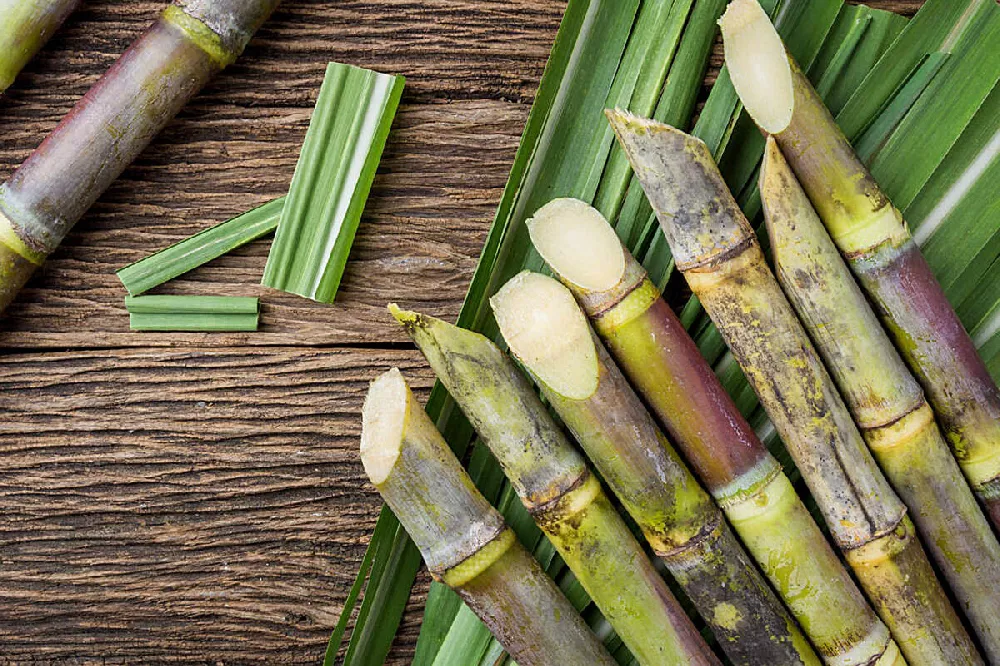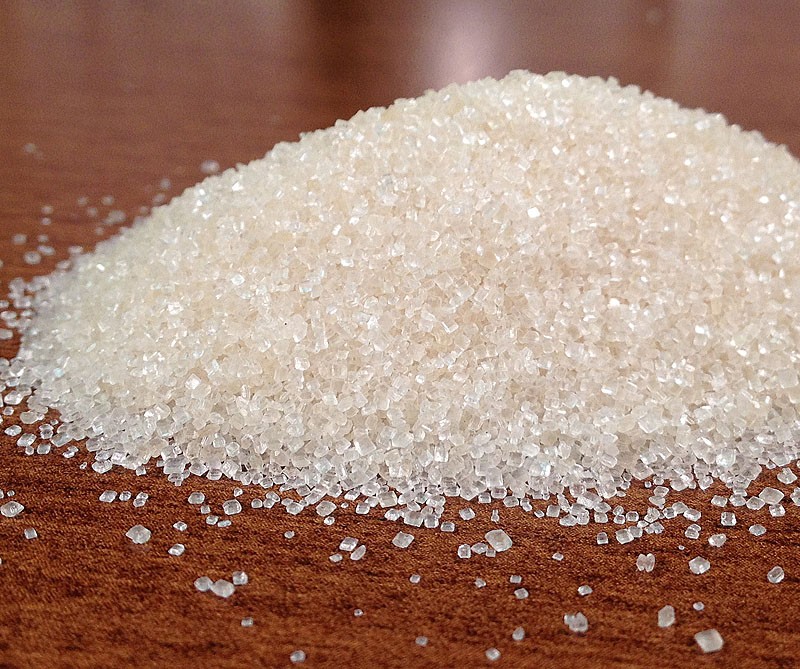Cane Sugar Processing: Secret Technologies for Superior Sugar Production
Cane Sugar Processing: Secret Technologies for Superior Sugar Production
Blog Article
A Comprehensive Overview to the Environmental Influence and Sustainability Practices in Walking Stick Sugar Handling
The ecological effect of cane sugar processing offers an intricate array of obstacles that warrant careful exam. From dirt deterioration and extreme water usage to the carbon footprint linked with cultivation and manufacturing, the consequences of standard techniques are significant. What certain techniques can be carried out to strike an equilibrium between productivity and environmental stewardship?
Summary of Walking Cane Sugar Handling
Walking cane sugar handling involves a series of organized steps that change sugarcane into refined sugar. Initially, collected sugarcane is moved to refining facilities, where it undergoes cleaning up to eliminate soil and particles. Following this, the cane is squashed to extract juice, which is after that cleared up by getting rid of pollutants with home heating and the enhancement of lime.
The cleared up juice goes through dissipation, where water is removed to concentrate the sugar material. These crystals are separated from the continuing to be syrup making use of centrifugation, resulting in raw sugar.
The last item is then dried and packaged for distribution. Throughout this whole procedure, maintaining effectiveness and quality assurance is vital to make certain the sugar satisfies industry standards. Each step in walking stick sugar handling not only adds to the last product however likewise has effects for source use and waste generation, setting the stage for discussions on sustainability and ecological effects related to sugar manufacturing.
Environmental Challenges of Manufacturing
The production of walking cane sugar offers numerous substantial environmental challenges that warrant focus. One key concern is the comprehensive use of agrochemicals, including chemicals and plant foods, which can bring about soil deterioration, biodiversity loss, and contamination of neighborhood water sources. The overflow from sugarcane areas often brings these chemicals right into close-by environments, interfering with aquatic life and influencing the wellness of areas reliant on these water bodies.
One more obstacle is the high power consumption connected with sugarcane processing. The boiling and refining stages require substantial warmth, largely generated by shedding nonrenewable fuel sources, adding to greenhouse gas emissions. Furthermore, the extensive acreage required for sugarcane growing can cause deforestation and environment destruction, additional worsening climate modification and harmful wild animals.
In addition, the labor techniques in some areas raise ethical worries, as employees might encounter bad working conditions and insufficient incomes. This situation frequently bolsters a cycle of hardship in local neighborhoods. Cane Sugar Processing. Dealing with these ecological difficulties is essential for developing much more lasting methods in walking stick sugar manufacturing, eventually benefiting both the atmosphere and the communities associated with this industry
Water and Land Use Effect
Water sources and land use are vital components in the walking stick sugar market that dramatically influence the setting. The growing of sugarcane calls for significant water input, with estimates suggesting that it can eat up to 2,000 litres of water per kg of sugar generated. This intensive use water frequently causes deficiency of neighborhood water sources, influencing not just the sugarcane vineyards however likewise bordering ecological communities and areas that count on the exact same water sources for farming and residential use.

Additionally, land use for sugarcane growing can result in logging and the conversion of all-natural environments right into monoculture vineyards. This method reduces index biodiversity, disrupts neighborhood ecological communities, and adds to dirt deterioration. The development of sugarcane fields frequently encroaches on valuable agricultural land, producing competitors for sources in between food and biofuel production.
Sustainable methods, such as optimizing watering techniques and carrying out plant turning, are necessary to reduce these impacts. By adopting much more efficient water usage and land monitoring approaches, the walking stick sugar market can decrease its ecological footprint, making sure a balance between agricultural performance and ecological conservation.
Greenhouse Gas Emissions
Greenhouse gas exhausts represent a considerable environmental problem within the walking cane sugar handling industry, specifically as farming practices expand to fulfill global need. The cultivation of sugarcane, a crop that prospers in tropical climates, counts greatly on synthetic fertilizers and chemicals, which add to laughing gas discharges. Additionally, land-use adjustments, including logging for brand-new sugarcane ranches, launch carbon dioxide saved in greenery and soil.
Throughout processing, power intake is an additional significant source of greenhouse gas emissions - Cane Sugar Processing. Many sugar mills utilize fossil gas to power equipment and create warmth, resulting in significant carbon footprints. Furthermore, the transportation of raw sugarcane and completed products includes layers of discharges with gas combustion in automobiles
This involves assessing current agricultural techniques, refining techniques, and transport systems to identify locations for enhancement and mitigation. Addressing greenhouse gas discharges is vital for promoting a much more sustainable walking stick sugar sector in a transforming climate.

Sustainable Practices and Innovations
Lasting methods and advancements are increasingly vital in the walking cane sugar processing market as stakeholders seek to lower environmental effects while maintaining efficiency. One considerable innovation is the application of incorporated plant monitoring, which enhances resource usage by incorporating dirt monitoring, parasite control, and advice crop turning strategies. This approach improves return while lessening chemical inputs and maintaining dirt health.
In addition, the adoption of renewable energy resources, such as biomass from sugarcane deposits, has actually obtained traction - Cane Sugar Processing. By transforming waste products into power, processing facilities can decrease their dependence on nonrenewable fuel sources, thereby decreasing greenhouse gas exhausts
Water monitoring practices have actually also seen enhancements through the recycling and reusing of water in handling plants, substantially reducing freshwater intake. Technologies in modern technology, such as precision agriculture, enable farmers to keep an eye on plant wellness and source use extra effectively, guaranteeing lasting cultivation practices.
Additionally, certification programs like Fair Profession and Rainforest Alliance encourage environmentally accountable farming practices and advertise social equity within the supply chain. By welcoming these lasting practices and advancements, the walking stick sugar processing sector can improve its strength and add favorably to ecological stewardship.
Verdict
The ecological impact of walking cane sugar handling presents significant obstacles, including soil deterioration, high water consumption, and greenhouse gas exhausts, alongside honest concerns associated to labor techniques. Dealing with these issues via sustainable techniques, such as incorporated plant administration, renewable resource fostering, and water recycling, is essential. By promoting socially fair and ecologically liable methods in sugar production, the sector can minimize its unfavorable impacts, making sure an extra sustainable future for both neighborhoods and ecological communities entailed in this field.
Cane sugar handling involves a collection of systematic steps that transform sugarcane into polished sugar. Each action in cane sugar handling not just adds to the last product yet also has implications for resource use and waste generation, setting the stage for discussions on sustainability and environmental effects associated with sugar manufacturing.
Greenhouse gas discharges represent a considerable ecological worry within the walking stick sugar handling sector, especially as farming techniques broaden to meet international demand.Sustainable methods and advancements are increasingly vital in the walking cane sugar processing sector my site as stakeholders look for to decrease ecological impacts while keeping productivity.The ecological effect of walking cane sugar processing provides significant obstacles, including dirt degradation, high water intake, and greenhouse gas emissions, together with ethical problems related to labor practices.
Report this page